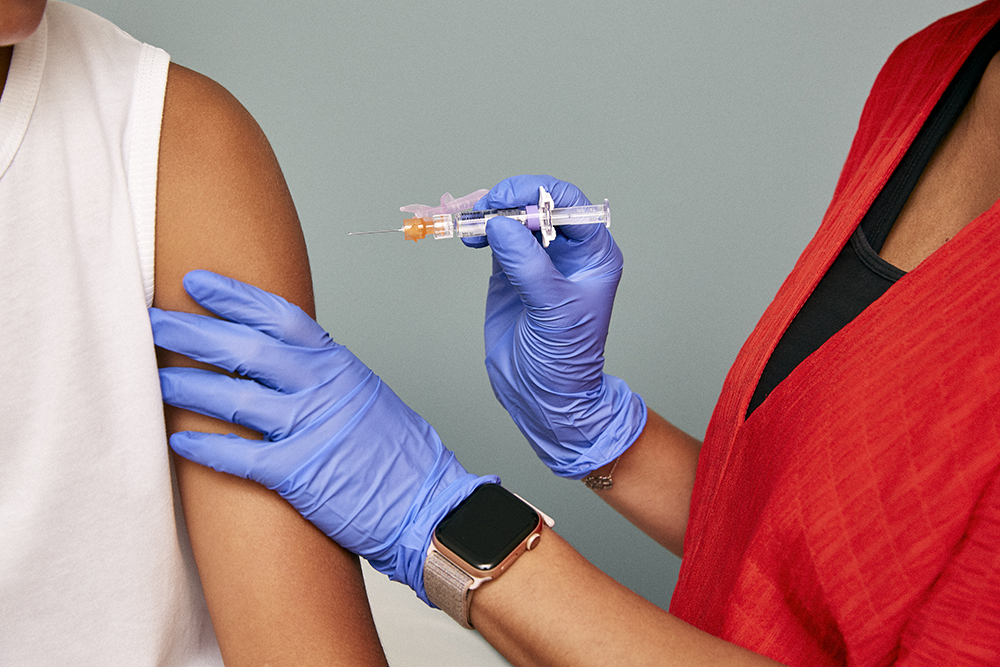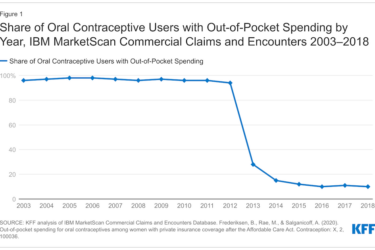Photo by Heather Hazzan, SELF MagazineAHCJ’s health beat leaders Barbara Mantel and Liz Seegert contributed to this story.
Just as some adults have had problems getting the newly formulated 2023-2024 COVID-19 vaccines, so too have parents of children under age 12 across the nation. Many parents have found it nearly impossible to find available shots for their younger children, according to reports from several cities, including Chicago, New York and Seattle.
Related: “Why you should cover the slow COVID-19 vaccine rollout and insurance concerns”
The challenges of getting the updated coronavirus vaccines into patients’ arms is “especially challenging for physicians and parents seeking to immunize children,” as Lena H. Sun and Fenit Nirappil reported for The Washington Post on Oct 2. Those challenges are a reflection of distribution delays, shortages at pharmacies and financial obstacles confronting pediatric practices, they added.
On Sept. 11, the U.S. Food and Drug Administration approved two new vaccines — one from Pfizer-BioNTech and one from Moderna — to target the currently circulating variants of COVID-19. The next day, the CDC recommended that everyone 6 months and older get the updated vaccines to protect against what the agency called “the potentially serious outcomes of COVID-19 illness this fall and winter” from the recent XBB.1.5 variant. This can include death and hospitalization. The American Academy of Pediatrics recommends that the updated dose be given at least two months after any previous COVID vaccine dose.
Despite FDA approvals and CDC recommendations that everyone 6 months and older receive the vaccine, many parents have had trouble getting the shot for their children even after they received it for themselves and their teenagers.
On the ground
Multiple people told AHCJ that many pharmacies either don’t know that the CDC recommended the vaccines for children 6 months and older or that they have the vaccines for adults but not for children.
In Bellevue, Wash., CVS Pharmacy told one mother on Sept. 16 that the store did not have the pediatric vaccines for children under 12. Two weeks later, she was still unable to find a pharmacy that stocked the vaccine. 145, a pediatrician in Seattle, said his practice received only the pediatric vaccines “after multiple inquiries about timing” on Sept. 27 and the practice got only 20% of the supply it ordered.
On Sept. 20, CVS told AHCJ that vaccines would be available for children 5 and older via online appointments and walk-ins starting later that week and that vaccines for children 18 months and older would be available in the coming weeks.
“Most of our locations can honor scheduled appointments. However, due to delivery delays from the wholesalers we work with, some appointments may be rescheduled,” CVS Retail Communications Senior Manager Matt Blanchette told AHCJ. “We apologize for any inconvenience this may cause and will continue to offer additional appointments at those locations as supply is received. To determine if a specific location has appointments available, customers can utilize our digital scheduler at CVS.com, which shows real-time availability.”
When visiting a Walgreens in Chicago, a parent learned the store did not have the pediatric vaccines in stock. The parent got this news after learning from a different Walgreens employee that the vaccine was not even recommended for children under 12.
The CDC’s clinical considerations page clearly identifies the number of vaccines — including the newly updated COVID-19 vaccines — and the dosages that children under 12 and under 5 should receive. A Walgreens spokesperson told AHCJ, “Walgreens is making appointments available for patients of this age as this supply comes into our sites. Earlier appointments may be added on a rolling basis as stores receive vaccines over the next few weeks.”
Conflicting messages
The confusion and lack of availability are leading some parents to question the motives behind pediatric vaccine inaccessibility. Laura Ehrlich, a parent in Austin, Texas, told AHCJ that neither CVS, Walgreens, nor H-E-B (a Texas grocery store and pharmacy chain) offered the new vaccine to children under 5, and one H-E-B pharmacist inaccurately told Ehrlich that the vaccine was not approved for children under 5. “I’m concerned their reason for not offering it to younger kids is political,” Ehrlich said. Her son’s pediatrician supports COVID vaccines but does not offer them because it’s a small practice.
Children ages 6 months to 4 years should complete a multi-dose initial series (two doses of Moderna or three doses of Pfizer-BioNTech) with at least one dose of the updated vaccine, according to the American Academy of Pediatrics. For these children, all doses should be from the same manufacturer. Children 6 months and older who are moderately to severely immunocompromised may need additional doses, the Academy added.
Another challenge for families is that many pediatricians prefer to administer the shots themselves rather than have their pediatric patients get their shots in a pharmacy, said Jesse Hackell, M.D., a retired pediatrician in Rockland County, N.Y., who chairs the American Academy of Pediatrics Committee on Practice and Ambulatory Medicine. But as of Sept. 28, few pediatricians had a supply of the new COVID vaccines.
“In pediatrics, we’re dealing with two different populations,” he said in a telephone interview. About half of all children have private insurance through a parent’s workplace. The other half have insurance through Medicaid or some other form of public insurance.
Since the federal government is not distributing the new COVID vaccines as it did during the public health emergency, pediatricians need to buy the vaccines from the manufacturers or a distributor, Hackell explained.
“You place an order and while they can give you extended payment terms such as 30 or 60 days, the pediatrician is setting out those funds to get the vaccine,” Hackell said. “Unfortunately, it’s been a very slow rollout of information from the insurance companies as to whether they will cover it and at what level they’ll cover.”
Such uncertainty means most of Hackell’s colleagues have said they will not order the new vaccine shots until they know they will be paid enough to cover their costs, including the shots and a margin to cover ordering, storage and other associated administrative expenses. “That information has been rolling in fairly consistently, but it wasn’t there on day one,” he added.
One of Hackell’s colleagues told him her two largest insurers would cover the costs in full and the other would pay only half of the costs. “That means you’re in a bind,” he said. “You don’t want to treat your patients differently, but we can’t afford to give a vaccine if we’re going to lose money on it.”
“Once pediatricians know that the payment will be adequate,” Hackell added, “they’ll order the vaccines for their privately insured patients.”








